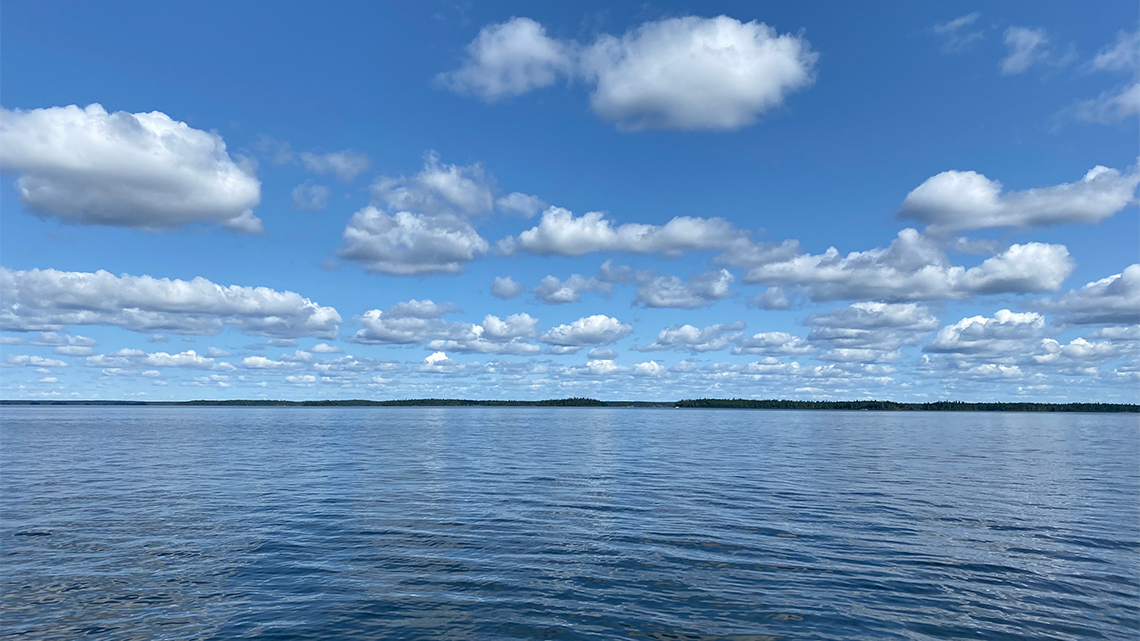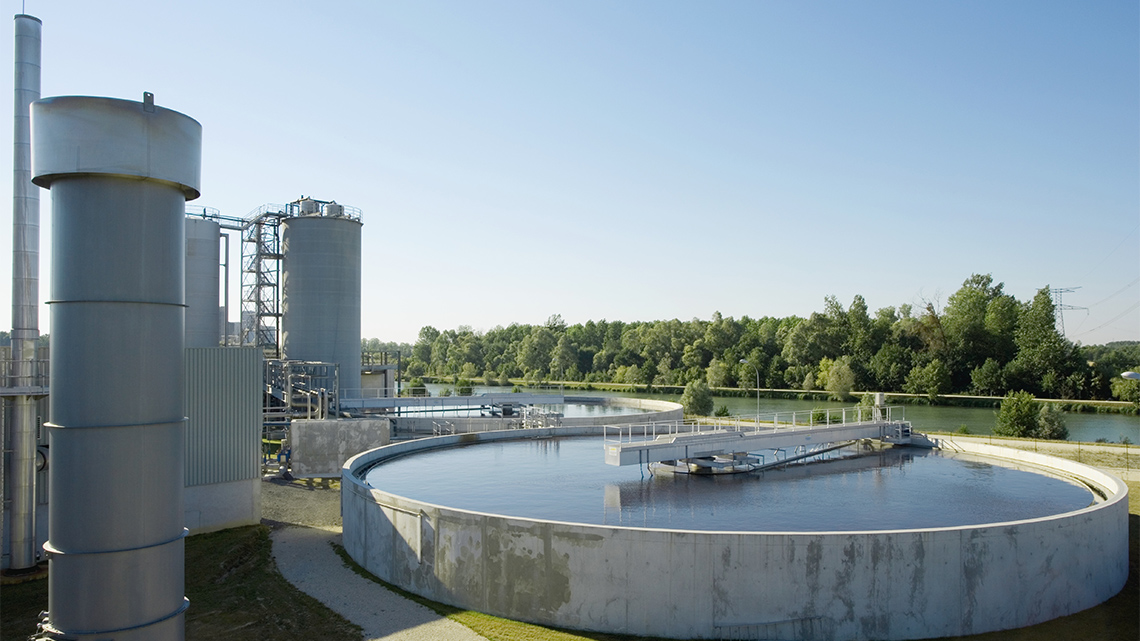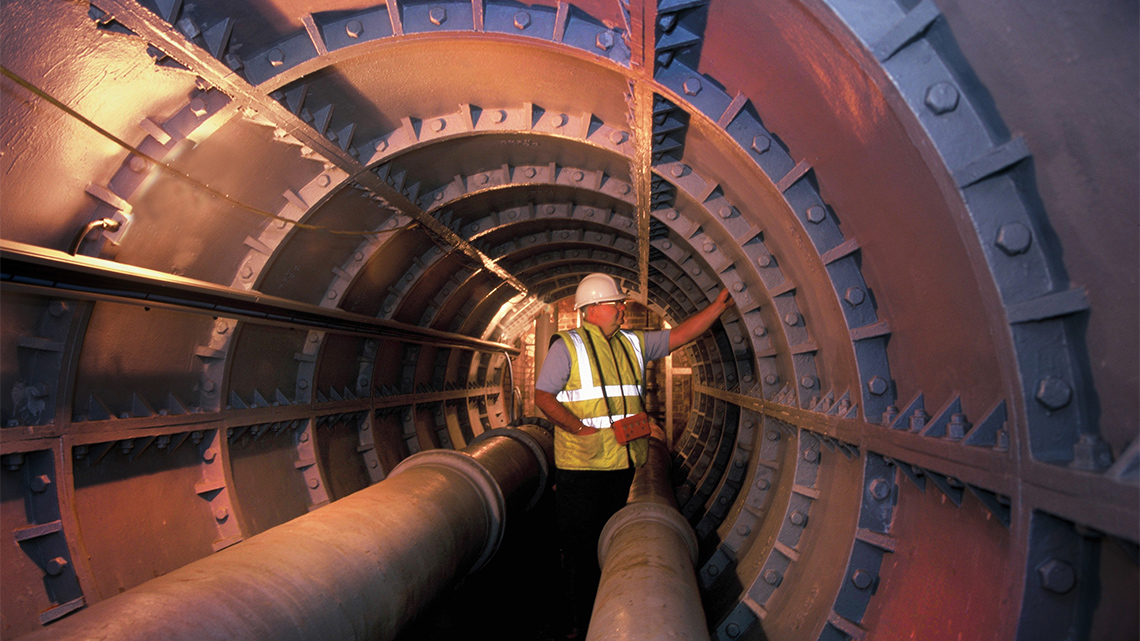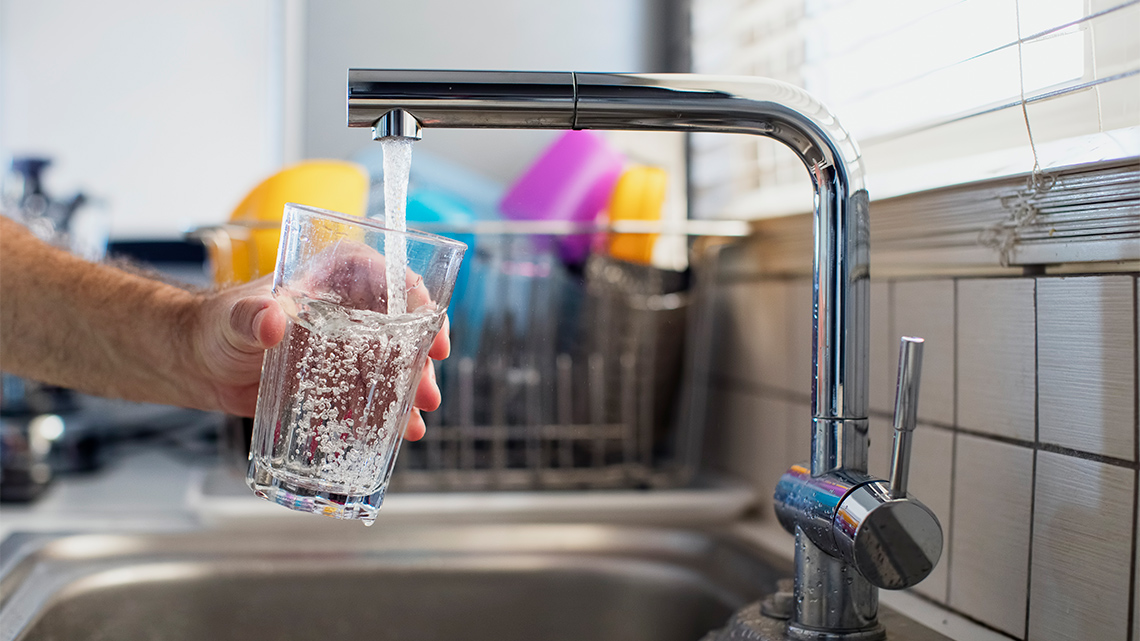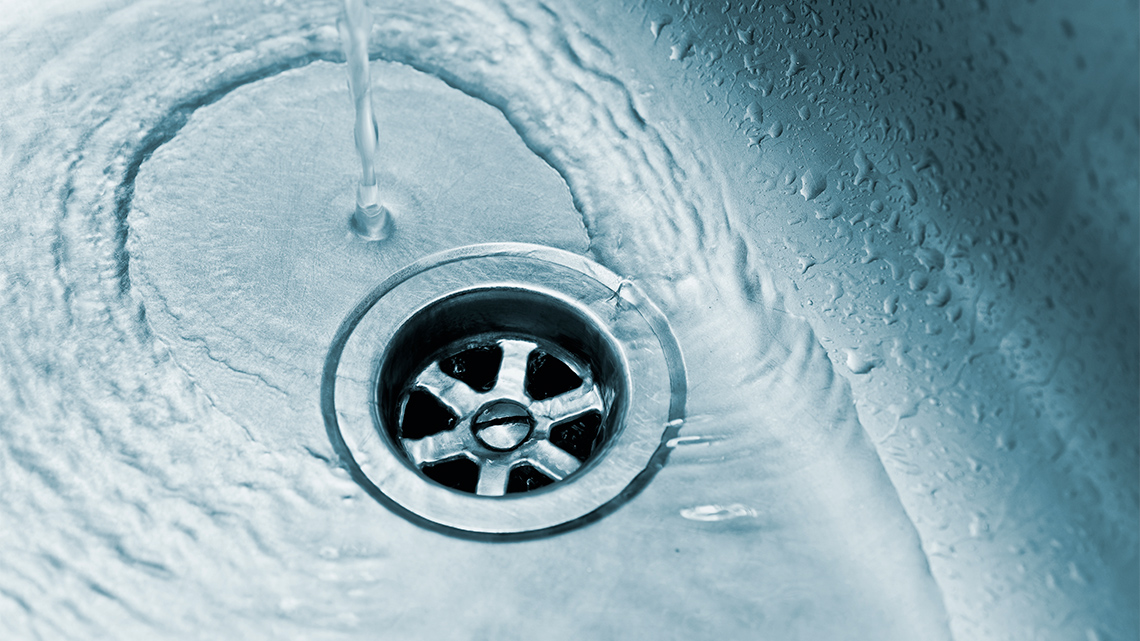Minds On
Water systems
Where do you think water comes from? How does water get from a lake or river to a faucet in a building? Where does it go when we are done with it?
Explore the following images.
Try It
Your turn!
Create an image/illustration, or record a description of how you think water gets from the source (lake or river) to its final destination.
Record your ideas in a notebook or another method of your choice.
Be sure to label any important stops or checkpoints you think water passes through along the way.
Action
Water infrastructure
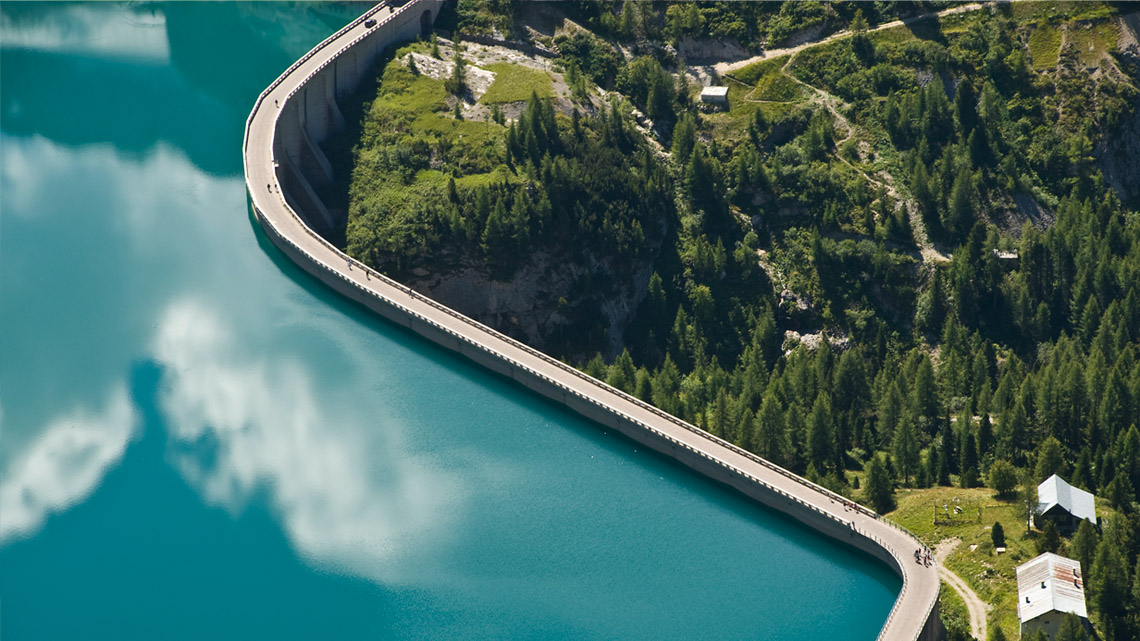
So, where does water really come from? What are the main types of drinking water sources?
In some homes and communities, the water may come from a well located on the property.
In other homes and communities, the water likely comes from a public water supply. Public water facilities provide water to homes in one of two ways: surface or ground water.
Press ‘Let’s Check!’ to access key terms and their definitions.
- Surface water is found at the surface of the Earth, in bodies such as lakes, rivers, or streams, and is drawn into a water treatment plant, where it is analyzed, treated, and then pumped out to a building.
- Ground water is located deep underground, held down by soil or holes in rocks.
Aquifer

An aquifer is represented as two layers of underground water separated by layers of rock. There is a stream above ground representing surface water and a well. The well reaches underground to pull water up above. Water flows through cracks in the underground rocks to make it's way to the stream.
Aquifer
An aquifer is a series of underground rocks that will allow water to pass through slowly. They are important because they let people access clean water. This underground water fills holes in the cracks between the rocks, sand, and stones that, all together, make up the aquifer.
Contamination
Unfortunately, ground water can become contaminated by harmful chemicals that pollute the aquifer and impact human health. Measures are taken to protect and clean aquifers.
How might contamination reach groundwater? Where might it come from?
Record your ideas in a notebook or another method of your choice.
Press ‘Let’s Check!’ to access possible responses.
Examples of contaminants that find their way into groundwater include:
- pesticides
- acid rain
- pollutants from factories, plants, landfills, animal waste, human waste, gasoline from boats
Investigate
Investigate
Let’s investigate how water is stored in an aquifer, how it can become contaminated, and how this contamination can end up in a water source.
Check out the following video to explore how to create an aquifer. Be sure to observe and record your observations at each stage.
After exploring the video, reflect on the following:
- What did you observe when the food colouring was placed into the water?
- Why do you think this happened?
Record your observations and ideas in a notebook or another method of your choice.
Innovation in Canada
This learning activity features emerging technologies, STEM contributions, and Canadian innovations that are making a difference.

Innovative methods
Now that you have investigated how ground and surface water can become contaminated, it is important to understand that, regardless of its source, water must always be analyzed to ensure it's safe to drink.
Water facilities filter and treat water to remove unsafe chemicals and pollutants, and make sure the water is safe to drink. Scientists and engineers are always developing new and innovative methods to provide water to communities.
Explore some of these innovative technologies!
Press the following tabs to explore some innovative water technologies.
Nanotechnology in filtration is used to purify water by removing microbes, bacteria, and other matter from water using nanoparticles that destroy any pollutants. This technology is low cost and prevents waterborne diseases.

A diagram of a nanofilter with the different parts labelled. A feed in tube brings the unfiltered water into the filter. The main filter is comprised of a concentrate, feed channel spacers, membranes, and permeate collection material. The filtered water is released through the permeate out tube.
Smart monitoring helps companies to ensure their water systems are working properly by detecting pressure concerns and leak locations early on using sensors and computer technologies.

A lot of fresh water is consumed by the agricultural industry (farming) to water crops. Intelligent irrigation uses precision and computer algorithms to determine appropriate times and amounts of water to use in agriculture, cutting the amount of water that gets consumed down.

Learning check!
Select the correct answer, then press “Check Answer” to see how you did.
Pause and Reflect
Pause and reflect
- Which innovative technology do you think could make the biggest impact on the environment?
- How could people use the information shared from smart monitoring to have a large impact on the surrounding environment? (What can this information tell them?)
- Could the irrigation system be used outside of farms? Where?
Record your ideas in a notebook or another method of your choice.
Innovative technologies
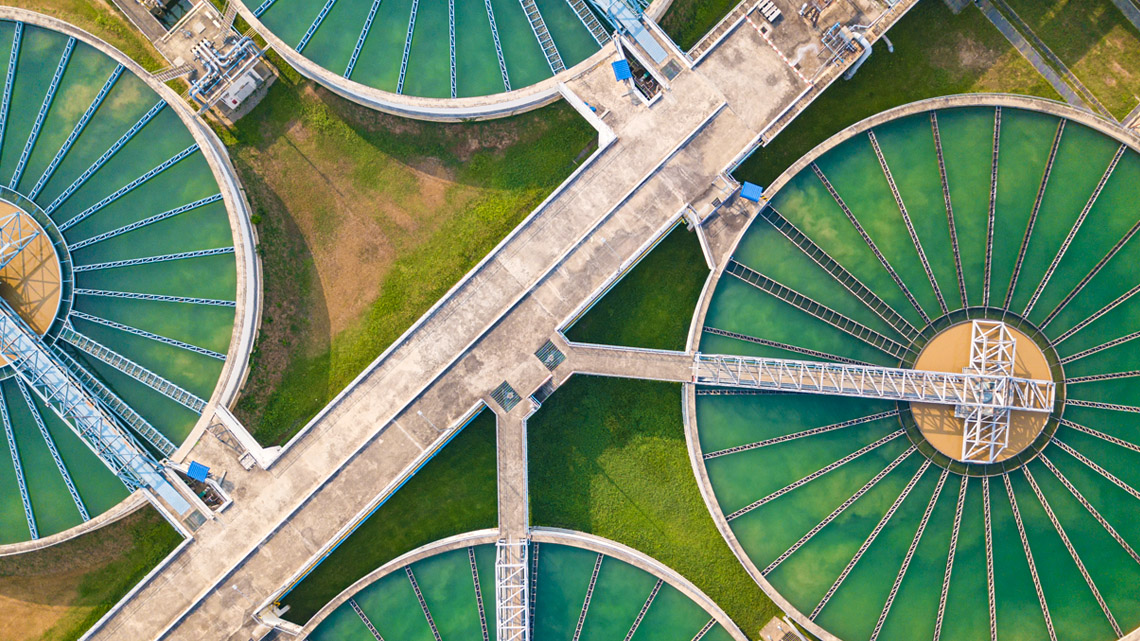
Innovative technologies around the world are providing clean and safe drinking water for communities.
There are some communities in Canada that do not have clean drinking water and many First Nations communities specifically do not have access to clean drinking water due to lack of infrastructure and resources.
Communities in Ontario are adopting innovative and sustainable water management systems. These innovations use less money, improve water performance, reduce water consumption, protect the environment, and create more jobs. Let’s learn more!
Investigate
Investigate
There are different components of Ontario’s Showcasing Water Innovation.
Let us investigate various case studies of innovative water technologies implemented in Ontario.
Press the following tabs to access each case study.
Stormwater management includes collecting and treating rainwater and snowmelt to minimize the impact of runoff into lakes and rivers.
|
Case Study 1: City of Guelph |
Case Study 2: Cities of Kitchener and Waterloo |
|---|---|
|
Issue: The city is reliant on groundwater supplies that are limited. They needed to reduce water usage. |
Issue: City budgets cannot keep up stormwater infrastructure and they want to invest in “green” stormwater systems. |
|
Innovative Solution: An audit (inspection or investigation) conducted showed that they could reduce water usage associated with bus washing in the city. A rainwater harvesting system and wash process, including spray nozzles, was installed. |
Innovative Solution: Use of a community based social-marketing campaign to develop, test, and implement the installation of green stormwater management. |
|
Results: This system reduces the amount of water needed to wash buses by 33%. |
Results: People were engaged, now hoping to install green stormwater infrastructure. |
Projects that addressed drinking water management mapped water use, found leaks in distribution systems and tested out new technologies for providing drinking water to remote communities.
|
Case Study 1: Attawapiskat First Nation |
Case Study 2: Town of Blind River |
|---|---|
|
Issue: Despite an operating treatment system, when fully running, the treatment plant still was not able to remove harmful chemicals from the drinking water. |
Issue: Water quality from Blind River’s wells was poor. |
|
Innovative Solution: Nanofiltration system that uses a film that removes chemicals from the water before sending it to the treatment plant. |
Innovative Solution: Install an automated system for flushing the town’s drinking wells that uses water quality sensors to switch from flushing to treatment. |
|
Results: The film removed significant levels of chemicals (iron, magnesium, and sodium), but not everything. The cost to operate the machine was expensive and required frequent cleanings. |
Results: This system has been installed on one of the five wells and is running well. They are hoping to improve the sensors so they require less monitoring. It has led to improved drinking water, lower operating costs, and reduced wastewater. |
Innovative technologies have been implemented to protect human health and the environment by increasing treatment capacity, improving performance, and lowering costs.
|
Case Study 1: City of Guelph |
Case Study 2: The Ontario Greenhouse Alliance |
|---|---|
|
Issue: High ammonia levels in water increases treatment costs, and the plant was unable to meet ammonia targets. |
Issue: Greenhouse vegetables are fertilized using a nutrient solution that should be recycled, however, not 100% of the solution is recycled, because plants take up nutrients, causing limited plant growth. |
|
Solution: Construct a full-scale side stream treatment process that removes ammonia from streams and converts it to nitrogen gas. |
Solution: innovative technologies were developed to remove the growth limiters in recycled nutrient solutions, increasing the ability to recycle the solution and reduce wastewater produced by greenhouses. |
|
Results: Reduction of ammonia in water by 25%, saved electricity, and freed up capacity of water treatment plant. |
Results: All systems succeeded in removing most of the limiters which allowed for the recycling of the solution to be successful, therefore creating less wastewater. |
What do you think?
After exploring the various case studies, let’s reflect on the following:
- Which of these innovations were successful? Which were not successful?
Record your ideas in a notebook or another method of your choice.
Filtration
Water is considered the universal solvent because it can be mixed with, or dissolve, almost anything (organic or synthetic). Some of these substances break down in the water and others do not.
Did You Know?
Did you know?
Civil, chemical, and environmental engineers work together to make existing water treatment systems better and develop new sustainable designs. There are three ways to treat water:
|
Aeration |
Passes large amounts of air through water and then vents the air outside, which vents out contaminants or causes certain chemicals to change state. |
|---|---|
|
Filtration |
The water passes through a fine mesh cloth in an attempt to remove some of the solids. |
|
Chemically |
Chlorine is widely used in disinfecting drinking water to ‘kill’ harmful bacteria. |
Design time!
Explore this video to learn about the steps of the Engineering Design Process.
For the following task, think as an engineer working for a Clean Water Company.
The company has asked you to design a new water filtration system to help filter polluted water. You can base your design off of the previously explored technologies.
For this task, you may choose to explore one or both of the task options.
Press the following tabs to access each task option.
Use the following organizer, “My Innovative Water Solution Activity,” or another method of your choice, to design your own filtration device.
Consider the following:
- How will you ensure it is working?
- What materials will you use?
- How would your prototype be used in the real world?
Create a sketch design or a detailed audio description of a filtration device. Be sure to label all components of the device. Explain how the filtration device will filter out pollutants and chemicals. Record your ideas in a notebook or another method of your choice.
You may use the following checklist to help guide your innovation and thinking.
I can create many potential solutions by…
Complete the My Innovative Water Solution Activity in your notebook or using the following fillable and printable document. If you would like, you can use speech-to-text or audio recording tools to record your thoughts.
|
Record responses to each of the following steps. |
|
|---|---|
|
Step 1: Ask! |
What is the problem you are trying to solve? |
|
Step 2: Think! |
Brainstorm some possible solutions to your problem. |
|
Step 3: Plan! |
Plan a design for your solution and list all of the materials that it requires. |
|
Step 4: Build! |
Build the first prototype of your device. |
|
Step 5: Test & Rebuild! |
Test your device by running water through it. Record your observations. What changes do you need to make? Why? |
|
Step 6: Ask! |
Does this solve the problem? |
|
Step 7: Share! |
Share your device with others using a method of your choice. |
Press the ‘Activity’ button to access My Innovative Water Solution Activity.
What do you think?
How will your filtration device help ensure clean drinking water?
Record your ideas in a notebook or another method of your choice.
Consolidation
Clean water
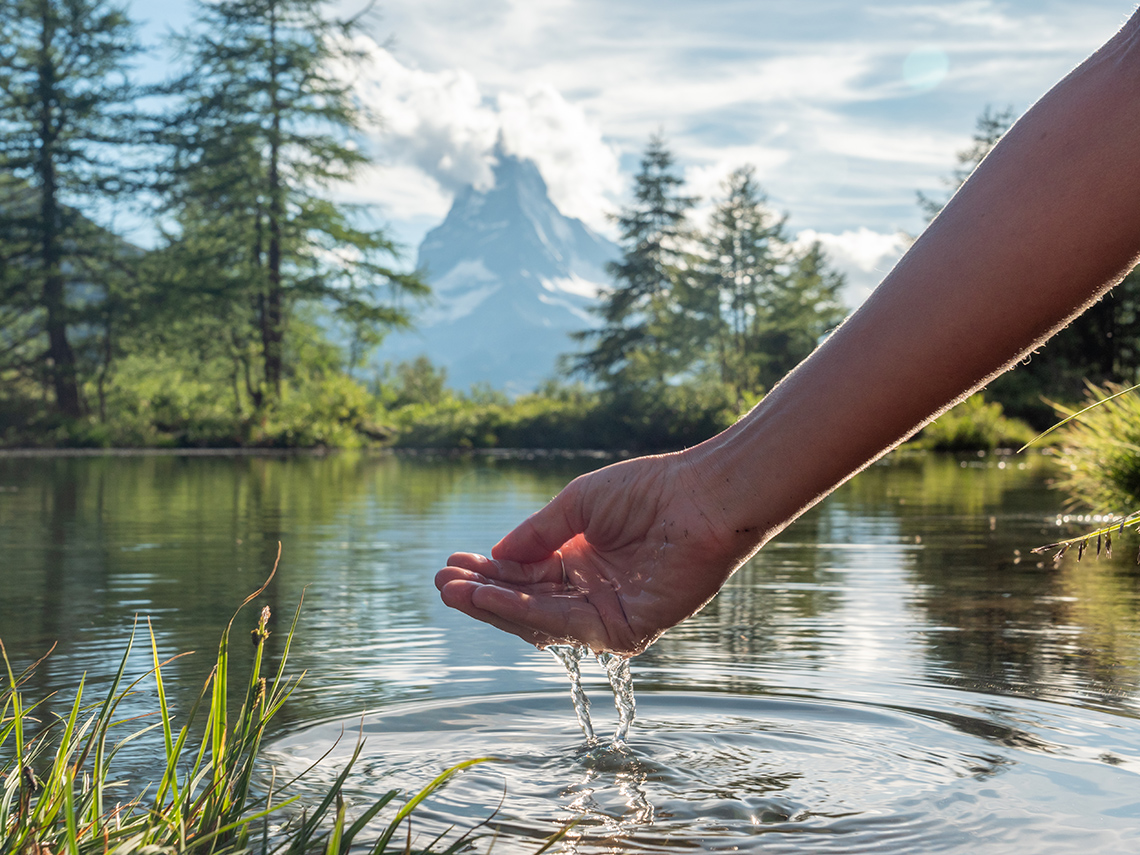
Student Success
Drinking water
Let’s think about and respond to the following questions:
- Why is it important to provide all communities with clean drinking water?
- What are some reasons why drinking water in a community becomes contaminated? Use the information from this learning activity to support your response.
- How might a community be impacted if they do not have access to clean water?
- What can be done to ensure more people have access to clean water in Canada?
Record your ideas in a notebook or another method of your choice.
Reflection
As you read the following descriptions, select the one that best describes your current understanding of the learning in this activity. Press the corresponding button once you have made your choice.
I feel…
Now, expand on your ideas by recording your thoughts using a voice recorder, speech-to-text, or writing tool.
When you review your notes on this learning activity later, reflect on whether you would select a different description based on your further review of the material in this learning activity.
